Unsung heroics of the last RAF pilot to battle the Luftwaffe in a biplane during World War Two are revealed as his medals sell for £22,000
By Alexander Robertson For Mailonline
PUBLISHED: 15:26, 10 March 2017 | UPDATED: 20:37, 10 March 2017
The unsung heroics of one of the last RAF pilots to go into battle against the Luftwaffe in a biplane have come to light, after his medals sold for £22,000.
Herbert Horatio Kitchener took part in a top secret mission to help the Norwegians in their last ditch effort to repel a German invasion in April 1940.
Some 18 Gloster Gladiator biplanes landed near a frozen lake at Aandelsnes in Norway only to find a massive lack of facilities, fuel and ammunition.
The planes were destroyed in a German bombardment, but not before the British took down 14 enemy aircraft using a combination of a machine gun on the ground and feint air attacks.
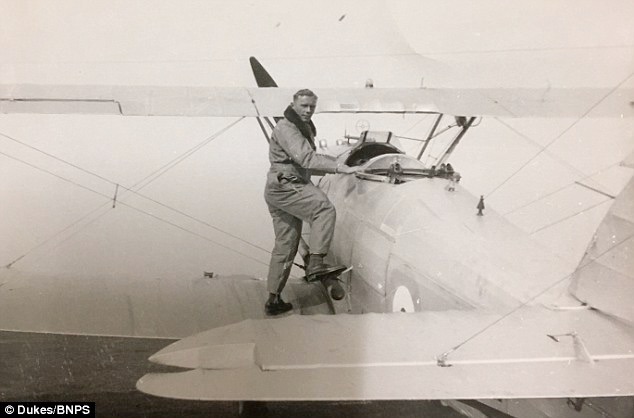
Herbert Horatio Kitchener was one of the last RAF pilots to go into battle against the Luftwaffe in a biplane
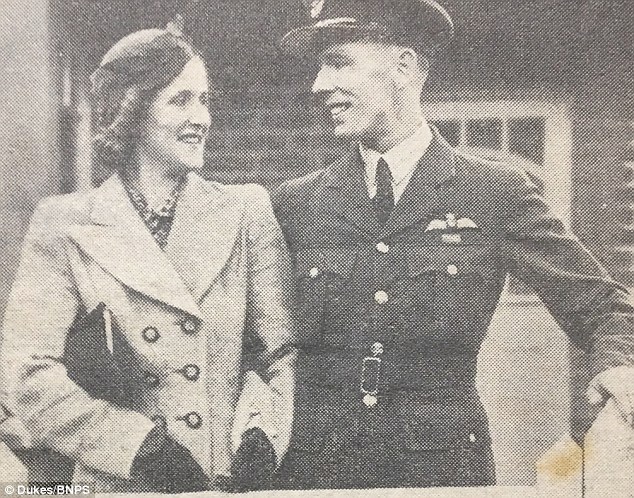
The auctioned items include the personal photographs of Kitchener, such as this one with his wife Margaret
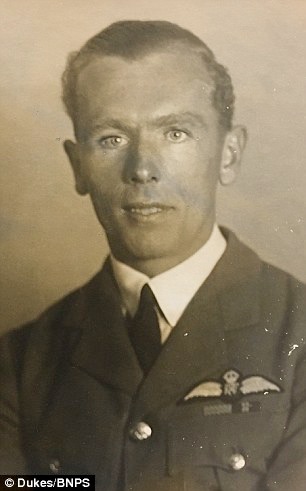
Kitchener (shown left) completed several missions in Norway which saw him awarded several medals, including the Norwegian Cross (shown right) - the equivalent of the Victoria Cross
Wing Commander Kitchener and the men of 263 Squadron were equipped with another 18 Gladiator biplanes to support the Battle of Narvik, further north.
Over a period of days Kitchener and his fellow pilots engaged in furious dog-fights and claimed 50 victories in all.
Kitchener shot down two German bombers and two Stuka dive-bombers and helped provide air cover for the evacuation of Narvik.
Ten of the 18 biplanes returned to the aircraft carrier HMS Glorious, which was later attacked and sunk with a great loss of life hours later.

Kitchener's medals, his flying goggles and hat, photographs and official letters and log books, were sold by his family through Duke's Auctioneers in Dorchester, Dorset
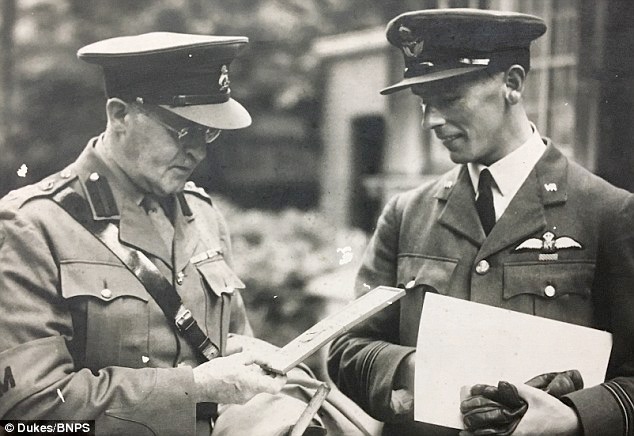
Kitchener (shown right), originally from Crowborough, East Sussex, joined the RAF Volunteer Reserve in 1937 at the age of 23 and quickly advanced through the ranks
The collection of items includes press clippings on the heroic feats of Kitchener (pictured)
Kitchener was not among them as he had earlier been assigned an aircraft with which he flew back to Britain.
BIPLANES DURING THE WORLD WARS
An aircraft with two main wings stacked above the other, biplanes became the first powered, controlled aeroplane to fly in 1903.
As a result, they saw significant use during the First World War, and were favoured by pilots as their lightness and stiffness made them the ideal toll during dog fights with the enemy.
However, by the 1930s biplanes had started to reach their performance limit and were slowly replaced throughout Europe by monoplanes.
By the start of the Second World War, several air forces still had biplane combat aircraft in frontline use, such as the Royal Air Force's Gloster Gladiator.
But their use faded throughout the war, with more purpose-built aircraft, such as the Submarine Spitfire, becoming favoured among British pilots.
He was later awarded the Distinguished Flying Medal for his bravery in Norway and the Norwegian Cross - the equivalent of the Victoria Cross - for helping the country in its time of need.
The day before he had been due at Buckingham Palace to receive his decorations in March 1941, he was tasked with intercepting a German Junkers 88 bomber off the Cornish coast.
His Westland Whirlwind fighter was badly damaged and he was forced to make a crash landing.
He suffered a fractured skull and broken arm in the process.
Kitchener's medals, his flying goggles and hat, photographs and official letters and log books, were sold by his family through Duke's Auctioneers in Dorchester, Dorset.
Kitchener, from Crowborough, East Sussex, joined the RAF Volunteer Reserve in 1937 at the age of 23.
He left the RAF in 1945 and worked in local government in Kent.
He died in 2010 aged 95.
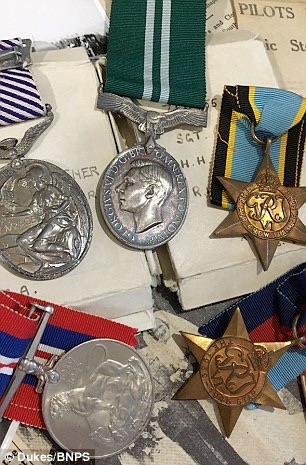
Medals won by Kitchener include (top row) The Distinguished Flying Medal, the Air Efficiency Award, the Air Crew Europe Star, (bottom row) the 1939-45 War Medal and the 1939-45 Star
NAZI OCCUPATION OF NORWAY
Despite proclaiming its neutrality, Norway was occupied by the German Army, the Wehrmacht, for five years during the war from April 9, 1940 until May 8, 1945.
In April 1940, the United Kingdom and France came to Norway's aid with an expeditionary force made up of ground troops and the RAF.
But after two months of fighting, the Allies were forced to leave and the Norwegian government sought exile in London.
Civil rule was effectively assumed by the Reichskommissariat Norwegen (Reich Commissariat of Norway).
About 80,000 Norwegian citizens fled the country during the course of the war.
The occupation of the country meant Hitler had ensured the protection of Germany's supply of iron ore from Sweden.
It also proved influential to the war effort, as it enabled the Nazis to obtain naval and air bases with which to strike at Britain if necessary.
The German army was eventually forced out of Norway by the Soviets in 1945, as they, along with the British and the Americans raced to take Berlin.